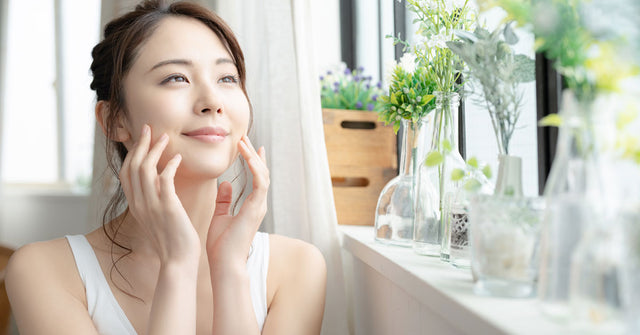Spending too much time in the sun can result in sunburn, especially if you forget to wear high-quality sunscreen. While some cases are mild, other times the symptoms of sunburn become more serious and could even lead to blisters.
Sunburn blisters can be painful, and they also cause itchiness, peeling skin, and other unpleasant symptoms. In this article, we’ll take a look at what these blisters are, why they develop, and what you can do about them.
What Are Sunburn Blisters?
Sunburn blisters generally appear as small, white bumps on your skin filled with fluid, and they often go along with symptoms like pain, inflammation, redness, and itchiness. The bumps contain lymphatic fluids and plasma from your blood, so you usually see a clear liquid if they break open. The blisters can become infected, leading to more severe symptoms and a puss discharge.
How Do You Know if Your Sunburn is a Blister?
Blisters usually only arise when your sunburn is moderate to severe [1]. If you’ve had excess sun exposure, there’s a good chance you could later develop blisters, but most of the time it takes a while before they appear. Some people get sunburn blisters after only a few hours of sun exposure, and in other cases, it takes an entire day before sores arise.
How Do Sunburn Blisters Form?
When you have a sunburn, it’s because exposure to UV rays has damaged the skin. Your body reacts to this damage to protect your skin and avoid infection, causing blisters to develop. These blisters form a protective barrier [2], and when they are intact, they contribute to the skin’s healing process. Remember that the blisters contain lymphatic fluids that play an important role in healing and recovery.
What Are the Stages of Sunburn Blisters?
When you have sunburn blisters, the sores will go through multiple stages of symptoms and healing. Understanding these stages can help you figure out how long the recovery process may take, and make treatment decisions.
Stage One: The Burn
It all starts with the actual sunburn. You spend time in the sun unprotected, and the UV rays burn the surface of your skin. At this point, you might notice some redness, and your skin may feel warm. However, the other symptoms usually take more time to develop.
Stage Two: Inflammation
The next stage is inflammation, which usually occurs before you begin to blister. This is your body’s natural response to injury, and it facilitates the healing process.
Stage Three: Blistering and Peeling
If you have moderate to severe sunburn, blisters may develop during stage three. In addition to blistering, your skin will likely start to peel. This helps your body get rid of the damaged layer and replace it with newer, healthier skin.
Stage Four: Prevention
Once you’ve healed, the final stage is to decide never to suffer from sunburn blisters again. Learning how to prevent this problem from happening is a valuable lesson for the future.
What Causes Sunburn Blisters?
These are some of the key causes that can contribute to sunburn blisters:
-
UV Radiation Damage: The most obvious cause is exposure to UV radiation from the sun, and it’s important to note that tanning beds can also lead to these blisters.
-
Cellular Damage: When UV rays and sunburn damage skin cells [3], the body may respond by producing blisters as a protective mechanism.
-
Inflammatory Response: The UV rays cause sunburn damage that triggers inflammation, which can contribute to blister formation.
-
Fluid Accumulation: Lymphatic fluids and other compounds flow to your skin to help heal the sunburn, causing blisters to form that store this liquid.
-
Severity of Sunburn: The risk of developing sun blisters increases with the severity of your sunburn.
What Are the Most Common Symptoms of Sunburn Blisters?
It’s also important to understand the symptoms of sunburn blisters:
-
Redness and Inflammation: The skin around the blister is often red and swollen, although the inflammation isn’t always visible depending on the severity of the sunburn.
-
Pain and Tenderness: You may notice pain in and around the blister, and some people also complain of tenderness.
-
Itchiness and Irritation: As the blisters develop and your skin peels, expect at least some itchiness. In some cases, this symptom can become severe and lead to Hell’s Itch.
-
Swelling and Edema: Apart from the inflammation, you may experience some water retention leading to a specific type of fluid-related swelling called edema.
-
Peeling Skin: Your skin usually peels a few days after you are exposed to UV rays and develop sunburn.
-
Blister Formation: Anywhere from a few hours to a day after you get a severe sunburn, blisters may develop on your skin. However, this usually doesn’t occur with a mild burn.
-
Fluid Leakage: Sunburn blisters are filled with fluid, and when they break, there is often some leakage.
What to Do If a Sunburn Blister Bursts
Sunburn blisters on face areas or other parts of your body can burst, and if this happens, it’s important to look at the leaking fluid to determine its color. If the liquid is clear, you’re all good. However, if the blisters leak yellowish or white puss, it could indicate an infection. Applying antibiotic ointment and covering the blister with a bandage without adhesive can help, or see a medical doctor.
Sunburn Blisters vs. Regular Blisters: Recognizing the Differences
If you compare regular to blistered sunburn, you’ll notice that they’re quite similar in appearance. The two conditions develop because your body is trying to protect your skin, and in most cases, both heal in about a week.
How Do You Treat Sunburn Blisters?
It’s important to understand how to treat sunburn blisters with basic first aid and other home remedies. Fortunately, there are a few simple steps you can take to effectively speed up healing. These are some of our best suggestions:
-
Drink Plenty of Water: Hydration is incredibly important when you have sunburn blisters. Drink a lot of water while you’re recovering to keep your skin hydrated and prevent dryness.
-
Use a Cool Compress: You can also use a cool compress to help relieve the burning and pain associated with sunburn. Put some ice in a bag, wrap it in a towel, and press it against the sunburned area.
-
Apply Sunscreen: Your skin may peel during the healing process, revealing a new, fresh layer underneath. Make sure to apply sunscreen with SPF when you’re outside to prevent further damage.
-
Don’t Pop Blisters: Don’t pop or poke at the blisters, and if they itch avoid scratching. You can end up breaking them, and they help your skin heal while they’re still intact.
-
Avoid Excess Sun Exposure: Try to reduce the amount of time you spend outside while your skin is healing from the sunburn.
-
Cleanse Gently: Even when you have a sunburn, you still have to cleanse your skin to prevent infections. For a gentle product that cleans without irritating, try Dermpura Skin Balancing Cleanser.
-
Apply Moisturizer: After cleansing, apply a quality moisturizer free of irritants and harsh chemicals. The Infusoderm Deep Hydration Daily Moisturizer is a great choice if you want an effective, hydrating product that is gentle on the skin.
-
Stay Cool: When you have sunburn, your skin may feel warm to the touch. Staying in a cool environment can help alleviate this issue and relieve other symptoms you’re experiencing.
-
Use a Serum: Apply a quality product like the Ace-Ferulic Skin Damage Restoration & Photo Aging Defense Serum, which can help repair your skin and speed up healing.
FAQs
How long do sunburn blisters last?
Sunburn blisters are symptoms of a moderate to severe burn, and they can take as long as a week to heal.
Should you cover sunburn blisters?
You should only cover your sunburn blisters if they break. In this case, use a nonstick bandage and apply a small amount of antibiotic ointment.
How should I sleep if I have sunburn blisters?
If you have sunburn blisters, sleep in a position that doesn’t put pressure on the affected area. In addition, we recommend wearing loose-fitted clothing and taking an NSAID to help with the pain if suitable.
What burn degree is a blistering sunburn?
A blistering sunburn that has developed due to overexposure to UV rays is usually classified as a second-degree burn.
What does a bad sunburn blister look like?
If your sunburn is really bad, red, swollen, inflamed blisters could develop over a large portion of your skin. The blisters can also break open, leak puss or fluids, and become painful.
Are blisters a sign of sun poisoning?
Blisters are not necessarily a sign of sun poisoning, but if you have serious symptoms, it’s a good idea to have a doctor look at your sunburn.
Do sunburn blisters leave scars?
Sunburn blisters may leave scars, especially if you have a serious condition. However, there are steps you can take to minimize their appearance.
You May Also Like to Read - What is Itchy Sunburn and How Can You Find Relief?
Conclusion
Symptoms like peeling skin and itchiness often accompany sunburn, and you may also develop blisters in serious cases. These sunburn blisters not only affect your skin’s appearance but are often extremely painful and itchy. You can speed up the healing process by cleansing gently, applying a cool compress, and avoiding unprotected sun exposure.
References
1] ↑https://www.ncbi.nlm.nih.gov/books/NBK534837
2] ↑https://www.skincancer.org/blog/ask-the-expert-what-should-i-do-if-i-get-a-blistering-sunburn/
3] ↑https://pubmed.ncbi.nlm.nih.gov/28109890/
Mentioned in this article
More stories

Korean Skincare: Here’s Everything You Need to Know









